Everyday Habits That Block Your Lymphatic System
Feeling sluggish, bloated, or constantly run-down—and can’t figure out why? Your lymphatic system might be crying out for help. This powerful yet often-overlooked network is your body’s built-in detox squad, responsible for flushing out waste, boosting immunity, and keeping things flowing smoothly. But here’s the kicker: everyday habits you don’t even think twice about could be jamming up the works. From your morning routine to how you sleep at night, small choices can quietly clog your lymph flow and sabotage your health. Ready to find out what’s slowing you down? Scroll on—these 50 surprising habits might just change how you treat your body, starting today.
Your Desk Job’s Dirty Secret
Sitting for long stretches might feel productive, but it can secretly wreak havoc on your lymphatic system. Unlike your heart, which constantly pumps blood, your lymphatic system depends entirely on muscle movement to circulate fluids. When you sit still for hours—especially in poor posture—your lymph flow slows to a crawl. This can lead to a buildup of waste and toxins, leaving you feeling sluggish, puffy, and even more tired by the end of the day. It’s not just a comfort issue—it’s a silent drain on your health.

Luckily, it doesn’t take much to get things flowing again. Simply standing up every 30 to 60 minutes can stimulate lymphatic movement. Stretch your arms overhead, roll your shoulders, do a quick walk down the hall—anything to engage your muscles. If you’re up for more, try bouncing lightly on your toes or investing in a small rebounder for quick “mini jumps.” These short, intentional movements encourage lymph drainage and can even boost your mental clarity. Incorporating a sit-stand desk or setting phone alerts as reminders to move can turn this into an easy, automatic habit. Over time, these micro-movements can help reduce fatigue, improve immunity, and make you feel more energized—without overhauling your routine.
How Tight Clothes Slow Detox
Those snug jeans or compression leggings might look great, but they could be putting the squeeze on your lymphatic system. Tight clothing, especially around the waist, chest, and groin, can restrict lymphatic vessels and prevent proper drainage. Since lymph relies on smooth, uninterrupted flow to carry toxins out of the body, any pressure or blockage can create congestion—and over time, that means more inflammation, puffiness, and toxin buildup.

You don’t have to ditch your favorite outfits, but try balancing them with looser, more breathable options throughout the day. Opt for flowy fabrics, stretchy waistbands, or soft undergarments that don’t dig into your skin. At home, give your body a break by changing into comfortable clothes that support circulation. Pay extra attention to bras, underwear, and shapewear—tightness in these areas can significantly impact lymph flow in the torso. Comfort isn’t just about relaxation—it’s a strategy for supporting your body’s natural detox process.
The Shower Mistake You’re Making
A hot, steamy shower feels amazing—but ending it on a cold blast could be even better for your lymphatic health. Alternating between hot and cold water, also known as contrast hydrotherapy, helps contract and expand blood vessels and lymphatic channels, stimulating circulation and drainage. This natural pumping effect encourages the movement of stagnant fluids and gives your lymph system a much-needed wake-up call.

To try it, spend a few minutes under warm water, then switch to cold for 30 seconds. Alternate two or three times, finishing with cold. It may feel shocking at first, but your body will quickly adapt—and you’ll likely feel more alert and refreshed afterward. Many people notice reduced puffiness, clearer skin, and even better energy from making this a regular ritual. It’s a simple switch in your daily routine that can have surprisingly powerful detox benefits.
Why Skipping Water Wrecks Flow
Dehydration is one of the fastest ways to gum up your lymphatic system. Lymph is about 95% water, so when you’re not drinking enough, it becomes thick and sluggish—making it harder for your body to transport waste and fight off illness. Without proper hydration, lymphatic flow slows, detox stalls, and your body becomes more prone to inflammation and fatigue.
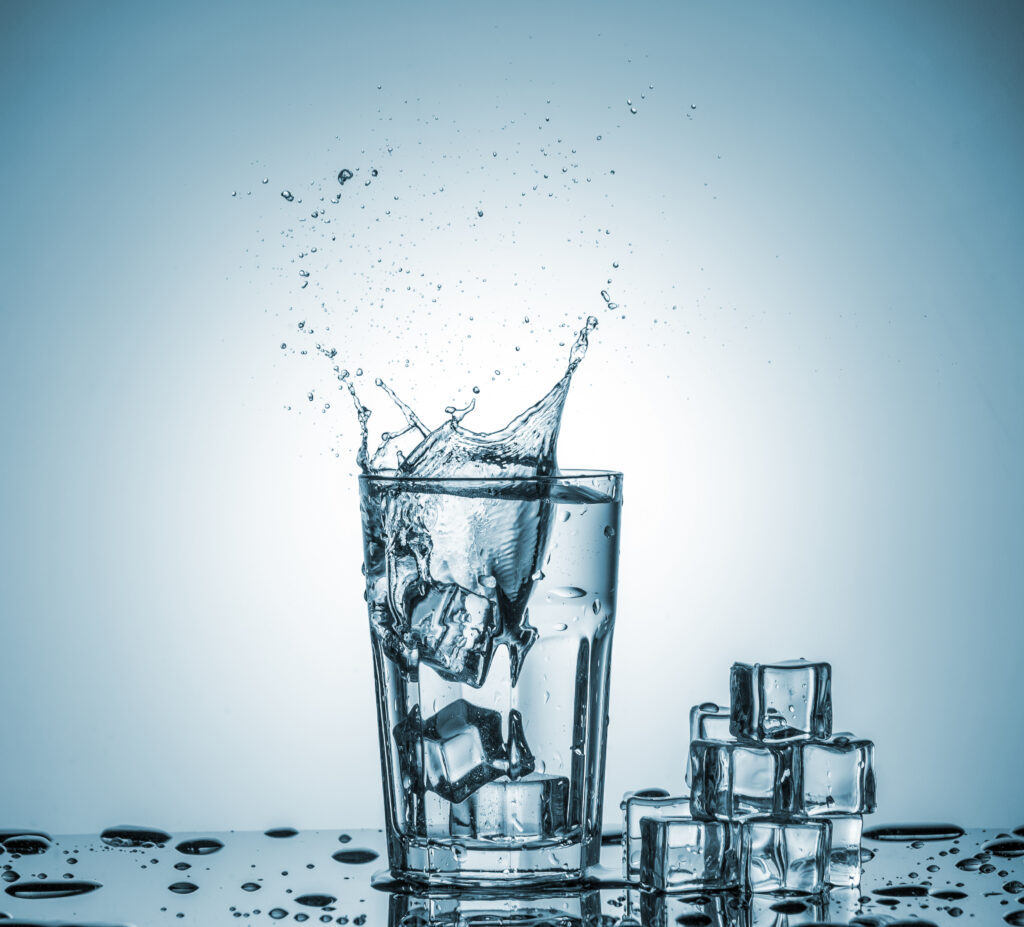
Start your day with a glass of warm water to gently wake up your system, and aim to sip consistently throughout the day rather than guzzling large amounts all at once. Adding a pinch of sea salt or a squeeze of lemon can help with absorption. If plain water doesn’t appeal to you, try herbal teas or infuse your water with cucumber or berries. Hydration is the foundation for a clean, flowing lymphatic system—and one of the easiest ways to feel better fast.
The Sleep Position That Stalls You
Sleeping on your right side or stomach may be messing with your body’s overnight detox. The lymphatic system, particularly the thoracic duct, drains mostly on the left side of the body. That means sleeping on your left side can support better lymphatic drainage while you rest. Meanwhile, sleeping on your stomach can restrict breathing and compress vital drainage points, especially around the neck and chest.

Making the switch doesn’t require a total sleep overhaul. Start by placing a body pillow behind your back to keep yourself on your left side. You can also elevate your legs slightly with a pillow under your knees to encourage fluid flow. These small positioning changes can reduce puffiness, improve digestion, and help you wake up feeling lighter and more refreshed. Your sleep posture isn’t just about comfort—it’s a key player in overnight detox.
This Daily Drink Causes Congestion
Your beloved morning latte or energy drink may be slowing your lymph flow more than you think. Caffeine in excess acts as a diuretic, leading to dehydration—a major enemy of the lymphatic system. On top of that, sugary or artificially sweetened drinks can promote inflammation, which further clogs your system and puts stress on your liver and kidneys, both of which work closely with lymphatic drainage.

This doesn’t mean you need to cut caffeine completely, but try to balance it out with plenty of water and anti-inflammatory drinks like ginger tea or warm lemon water. If you’re drinking multiple caffeinated beverages a day, consider swapping one out for a hydrating herbal option or a green smoothie. Supporting your lymph system doesn’t mean giving up everything you love—it’s about being strategic and keeping hydration and balance at the forefront.
Your Bra Might Be the Culprit
Wearing a tight bra for extended hours can restrict lymphatic flow in the chest, underarms, and breast area. The lymphatic vessels in these zones are delicate and heavily concentrated, and compression from snug bands and underwires can block drainage, especially if you’re wearing bras that don’t fit properly or are worn too long without breaks.
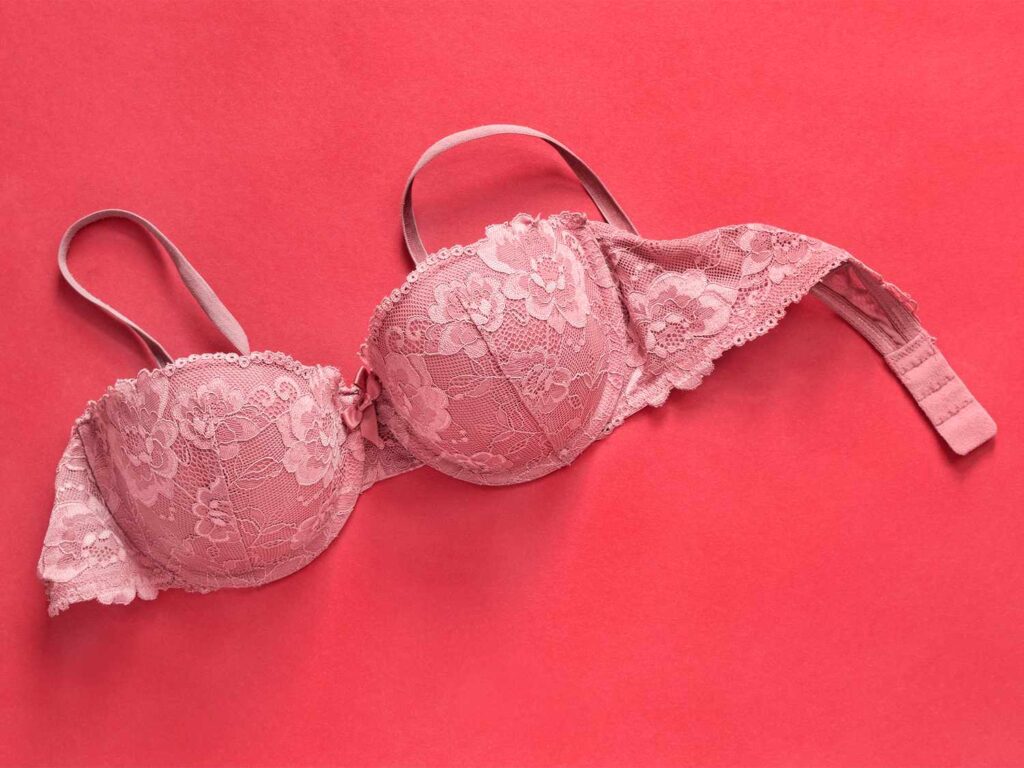
Give your lymph system a break by choosing soft, wire-free bras when possible, and go braless at home to allow unrestricted flow. Consider light lymphatic massage around your collarbones, chest, and underarms in the evening to encourage movement and reduce tenderness or puffiness. Comfort and circulation go hand in hand, and loosening up a bit could do more than improve your posture—it might boost your body’s ability to naturally detox.
How Sitting Still Builds Toxins
Extended periods of inactivity—whether it’s binge-watching shows or a long commute—can stall lymphatic movement dramatically. When your muscles stay still, your lymph vessels don’t get the gentle compression they need to pump fluids through the body. This can lead to stagnation, swelling in the limbs, and a sluggish immune system, especially if it’s part of your daily routine.
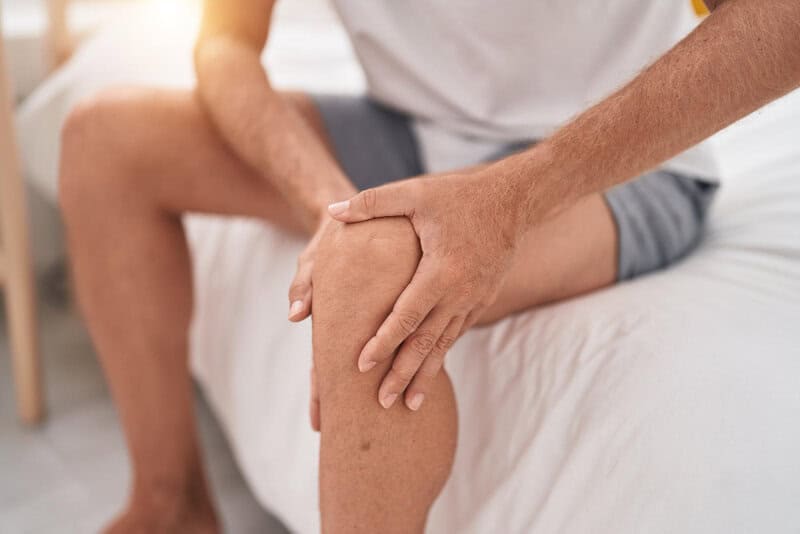
Combat this by weaving movement into your lifestyle. Take stretch breaks during screen time, do a few calf raises while brushing your teeth, or practice leg lifts during long flights or car rides. Lymphatic flow responds to even small movements, so every bit helps. Keeping things moving throughout your day supports your energy, immunity, and overall detox—without requiring a trip to the gym.
The Surprising Danger of Deodorant
Many commercial deodorants and antiperspirants contain aluminum-based compounds that block your underarm sweat glands—and that’s a problem for your lymphatic system. The underarm area is packed with lymph nodes, and sweating is one of the body’s natural ways of eliminating toxins. When you plug up that pathway, you’re essentially forcing waste to stay trapped inside.

Switching to a natural deodorant without aluminum, parabens, or synthetic fragrances is a great first step. Look for options with ingredients like baking soda, magnesium, or activated charcoal, which help neutralize odor without interfering with detox. You can also support this area by gently massaging under your arms or doing dry brushing toward the heart. Letting your body sweat a little more freely can be uncomfortable at first, but over time, your system will rebalance—and your lymphatic flow will thank you.
Phone Time That Blocks Drainage
Leaning your head down to stare at your phone might feel harmless, but that “tech neck” position can create tension in your shoulders, neck, and jaw—three critical areas for lymph drainage. When these areas get tight, lymphatic flow becomes restricted, leading to headaches, facial puffiness, and even sinus congestion. The longer you hold that posture, the more sluggish your system becomes.

Try raising your phone closer to eye level and taking frequent breaks to stretch your neck and shoulders. Gentle head rolls, jaw massages, and posture checks can go a long way in restoring lymph movement. Adding a few minutes of deep breathing while you stretch can also help reset the nervous system and promote even better drainage. A few tweaks to your screen time habits can dramatically reduce tension and improve the flow of energy (and lymph) through your upper body.
Why Your Workouts May Backfire
Exercise is essential for a healthy lymphatic system, but not all movement is equal. High-intensity workouts without proper warm-up or cool-down can create inflammation and muscle tension, which might actually block lymph flow. Overtraining or pushing through fatigue can also trigger cortisol spikes, which increase fluid retention and slow detox.

Balance is key. Incorporate gentle, lymph-supportive activities like yoga, rebounding (mini trampoline bouncing), or brisk walking into your routine. These movements are low-impact but highly effective in activating lymphatic circulation. Don’t skip your cooldown—stretching and deep breathing help your body process the stress of exercise and keep things flowing smoothly. Working out should leave you feeling energized, not swollen or drained. When done right, movement is one of the best ways to clear your lymphatic traffic jam.
This Habit Weakens Lymph Flow
Slouching—whether it’s at your desk, in your car, or on the couch—compresses your chest, abdomen, and diaphragm, limiting both circulation and lymphatic drainage. Poor posture affects the natural pumping of lymph fluid through your thoracic duct, which is the main highway for detox. Over time, that slumped-over position can contribute to stagnation and swelling in the limbs, face, and torso.

Improving your posture doesn’t require rigid discipline. Start with small awareness checks throughout the day. Roll your shoulders back, elongate your spine, and lift your chest slightly to open up your breathing and support better lymph movement. Strengthening your core and back muscles can also help you maintain better posture effortlessly. As you sit and stand taller, you’ll likely notice more energy, reduced tension, and an overall lighter feeling in your body.
How Skin Care Can Clog You
Your skin is one of your body’s major detox organs, and everything you apply to it gets absorbed directly into your lymphatic system. Unfortunately, many popular skincare products contain parabens, phthalates, and synthetic fragrances that disrupt hormone balance and burden your body’s natural filtering systems. These chemicals can build up in your tissues and interfere with healthy lymphatic flow over time.

Choose products with clean, plant-based ingredients and avoid anything with long, unpronounceable chemical names. Better yet, try dry brushing before a shower to gently exfoliate and stimulate lymph flow, especially around your neck, arms, and legs. Facial massage with a gua sha or jade roller is another soothing way to support circulation while applying your serums or oils. Clean beauty isn’t just a trend—it’s a practical way to support detox from the outside in.
The Toxin Trap in Your Food
Heavily processed foods, artificial additives, and hydrogenated oils are notorious for creating inflammation—and that inflammation slows your lymphatic system to a crawl. Your body has to work harder to break down these “non-foods,” which can overload your liver and lymph nodes with excess waste. Over time, this makes it harder to drain toxins, leading to water retention, fatigue, and a general feeling of heaviness.
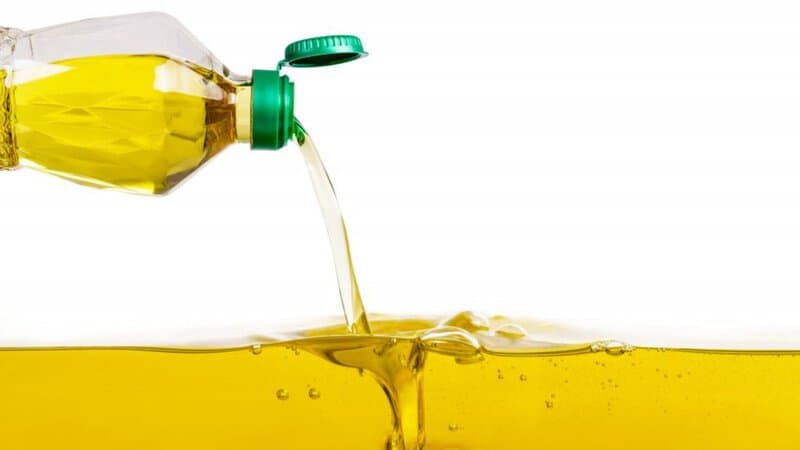
Opt for whole, nutrient-dense foods that naturally support detox, like leafy greens, berries, citrus fruits, garlic, and turmeric. These ingredients help thin the lymph and reduce internal inflammation. Even small swaps—like replacing packaged snacks with fresh fruit or adding herbs to your meals—can make a big difference. Eating clean fuels your lymphatic system and sets the stage for better energy, clearer skin, and a stronger immune defense.
What Your Morning Routine Misses
Your lymphatic system slows down while you sleep, which is why a gentle morning routine can make a huge difference. If you roll straight from bed into a busy day without moving or hydrating, your body misses the chance to “flush the pipes.” You might feel groggy, puffy, or stiff—not because you didn’t sleep well, but because your lymph is stuck.

Start your morning with a glass of warm lemon water to jumpstart hydration and digestion. Add in five minutes of gentle movement like stretching, bouncing, or even a few yoga poses to activate your muscles and lymphatic vessels. A quick self-massage to your neck, chest, and armpits can also help get things flowing. These mini rituals create a ripple effect—boosting energy, clearing brain fog, and setting you up for a lighter, more vibrant day.
Lymph Flow Hates This Snack
Chips, crackers, and other salty snacks may satisfy a craving, but they’re notorious for causing water retention and bloating—two red flags for sluggish lymphatic flow. These processed foods are usually loaded with refined sodium, artificial additives, and hydrogenated oils, all of which create inflammation in the body. That inflammation can overwhelm your lymph system, making it harder to clear waste effectively.

If you’re craving something crunchy, opt for healthier swaps like sliced cucumbers with hummus, roasted chickpeas, or lightly salted nuts. These options still satisfy, but without the heavy burden on your detox systems. You can also add potassium-rich foods like bananas, avocados, and sweet potatoes to your diet to help balance out sodium and encourage natural drainage. The fewer toxins and inflammatory ingredients your lymph system has to fight, the more energy and clarity you’ll feel daily.
Why Lack of Sweat is Risky
Sweating isn’t just for cooling down—it’s a vital part of your body’s detox process. When you rarely break a sweat, your skin (a key detox organ) misses the chance to offload toxins, and your lymphatic system ends up taking on more than it should. This can lead to stagnation, puffiness, and even skin issues like breakouts or dullness.
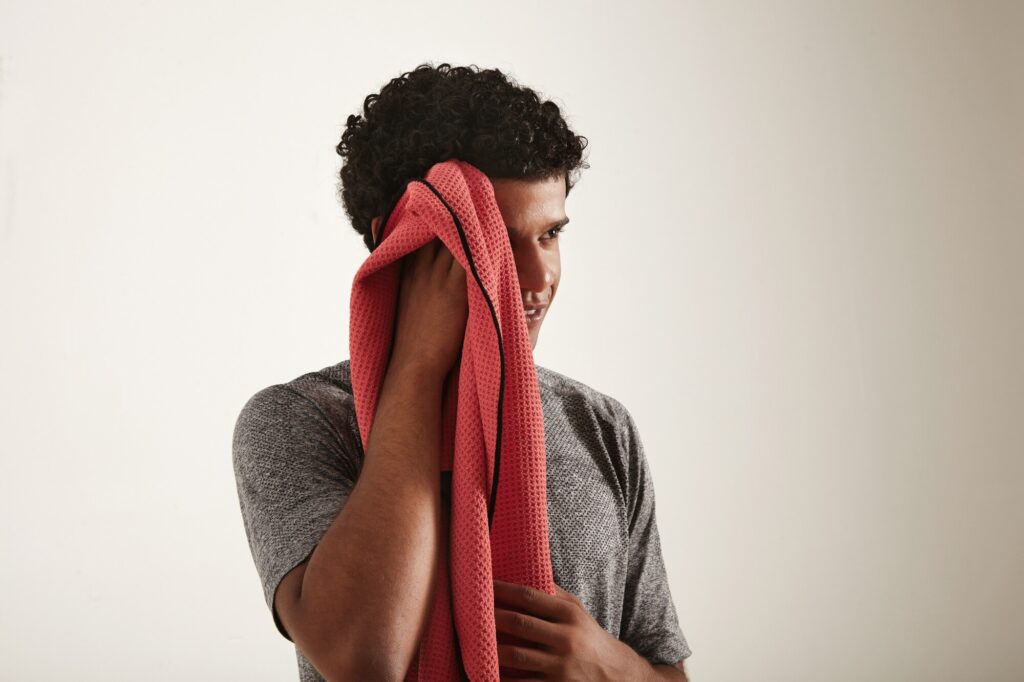
You don’t need to hit the sauna every day, but incorporating activities that make you sweat—like brisk walking, dancing, or hot yoga—can support lymph flow. If intense workouts aren’t your thing, try sitting in a sauna or taking a hot bath to get those pores open. The goal isn’t drenching yourself daily, but making sure your body has regular opportunities to release waste through sweat. It’s a simple and powerful way to support whole-body wellness.
Overbreathing? You Could Be Stuck
Most of us take shallow, fast breaths without realizing it—and this habit keeps your lymph system from doing its job efficiently. Deep breathing acts like a pump for lymphatic fluid, especially around the thoracic duct (one of the system’s main drainage centers). Without enough diaphragm movement, lymph flow slows and toxins build up.

Try adding 3-5 minutes of deep belly breathing to your daily routine. Inhale through your nose for four counts, hold for four, and exhale for six. Do this while lying on your back or sitting comfortably with your spine straight. You might be surprised how much more relaxed and clear-headed you feel afterward. Deep breathing doesn’t just calm your nervous system—it literally helps move waste out of your body. It’s one of the cheapest, easiest, and most powerful detox tools you’ve got.
Your Pillow Might Be to Blame
Sleeping on an overly flat or too-high pillow can interfere with lymphatic drainage around your neck and head. The lymph system relies on open pathways and smooth circulation, especially overnight when the body is in repair mode. A poorly positioned head and neck can create pressure points that slow fluid flow and contribute to morning puffiness, sinus pressure, or even headaches.

Aim for a pillow that keeps your spine aligned and supports your neck’s natural curve. Memory foam or adjustable fill pillows can be helpful for finding the perfect height. If you tend to wake up feeling heavy-headed or swollen around the eyes, your pillow could be the hidden culprit. Adjusting your sleep setup is a small change that can make a big difference in how your body recovers and detoxes each night.
The Detox Myth That Hurts You
Many people turn to extreme detoxes—juice fasts, harsh cleanses, or restrictive diets—thinking they’ll jumpstart lymphatic drainage. But these quick fixes often do more harm than good. They can overwhelm your body, disrupt digestion, and dehydrate you, which ironically slows lymph flow. The lymphatic system thrives on gentle, consistent support—not drastic measures.

Instead of going to extremes, focus on sustainable habits: hydrate consistently, move daily, and eat clean, anti-inflammatory foods. Herbal teas like red clover, cleavers, or dandelion can gently support lymphatic cleansing without shocking your system. Think of your lymphatic system like a stream—it needs steady flow, not a flood. True detox isn’t about punishing your body—it’s about working with it in a way that builds lasting balance and energy.
Caffeine Could Be Clogging You
Caffeine in moderation isn’t the enemy, but excessive consumption can lead to dehydration, which directly slows lymphatic flow. Coffee and energy drinks also spike cortisol, your stress hormone, which can trigger fluid retention and reduce your body’s ability to detox efficiently. Over time, this can leave you feeling wired but tired—and more toxic than energized.
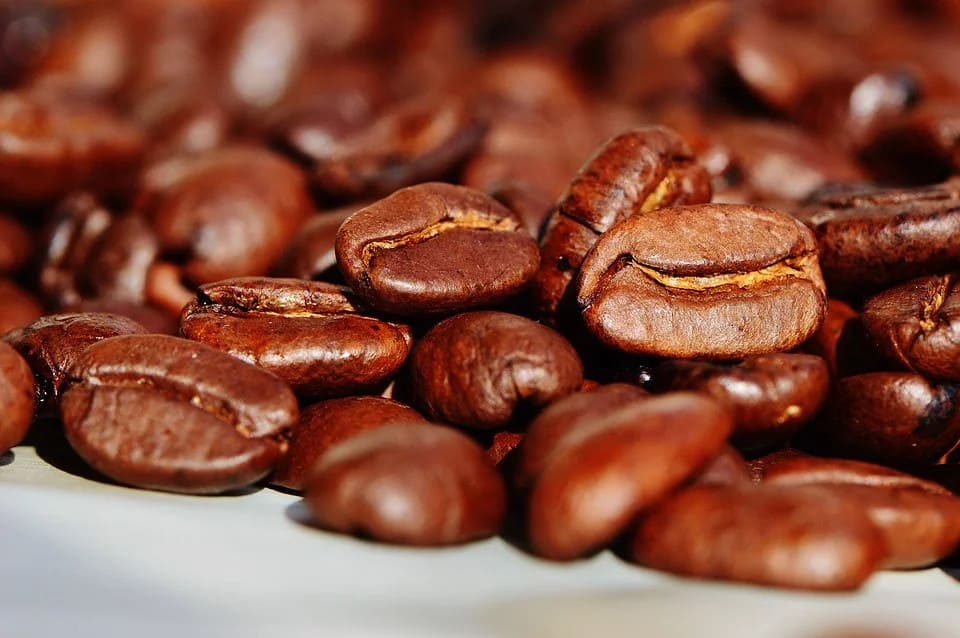
Cutting back doesn’t mean going cold turkey. Try switching to green tea, which contains less caffeine and adds antioxidants to the mix. Or go half-caf for a smoother transition. Be sure to drink extra water when you do have caffeine to offset its dehydrating effects. When your body is well-hydrated and your stress levels are balanced, your lymphatic system has a much better shot at doing what it was built to do—clear out the junk and keep you feeling light and refreshed.
This Emotion Slows Your Lymph
Chronic stress and repressed emotions—especially anger or anxiety—don’t just live in your mind. They show up in your body, tightening muscles, constricting breath, and slowing down lymphatic flow. The lymph system is especially sensitive to emotional states because it’s closely tied to your nervous system. When you’re constantly tense or in fight-or-flight mode, your body deprioritizes detox, which leads to stagnation and inflammation.

Emotional release can be a powerful lymph mover. Journaling, deep breathing, walking in nature, or talking with someone you trust can help move those stuck feelings—and stuck fluids. You don’t have to dive into deep therapy to get results (though that helps, too). Even just acknowledging how you feel and giving yourself permission to pause can create space for healing. Your emotions aren’t just “in your head”—they’re part of your physical detox process, too.
Your Shoes Might Be Stifling Flow
Wearing overly tight shoes or high heels can do more than cramp your style—they may be cramping your lymphatic circulation, too. Your feet and calves play a major role in helping lymph move upward, especially since they’re often the furthest point from your body’s core. When circulation is restricted in these areas, fluid can pool in the lower legs, leading to swelling and heaviness.

Try to alternate between supportive footwear and styles that allow your feet to move and breathe. Go barefoot or wear flexible, natural shoes at home to give your feet a break. Foot massage and calf stretching also help stimulate the lymphatic vessels in the legs. If you’re on your feet all day, elevate your legs at night to reduce fluid retention. A little attention to your feet can go a long way in keeping your entire lymph system flowing better.
Why Ice Water Shocks Your System
Ice-cold drinks might be refreshing, but they can put a temporary freeze on digestion and lymphatic activity. Your body works best at a warm internal temperature, and flooding your system with icy beverages can constrict blood vessels and slow the movement of lymph. Over time, this habit can contribute to sluggish detox and bloating, especially when combined with heavy meals.

Try switching to room temperature or warm drinks—especially in the morning or during meals. Herbal teas, warm lemon water, or even just water with no ice are all gentler on your system. These small shifts support smoother digestion and help maintain the steady, rhythmic flow your lymph system needs. Cooling off is great on the outside—but when it comes to your detox pathways, warmth keeps things moving.
Skipping Breakfast? Bad Move
Starting your day without food might seem like a shortcut to energy or weight control, but it could be setting your lymphatic system back. Overnight, your body enters detox mode, and breakfast is your first chance to fuel up and rehydrate. When you skip it, your body stays in a fasted state, which can delay digestion, circulation, and lymph flow. This can leave you feeling foggy, sluggish, and bloated by midday.

A light, nutrient-rich breakfast can help kickstart your metabolism and support natural drainage. Think smoothies with leafy greens and berries, oatmeal with chia seeds, or eggs with sautéed spinach. Add a glass of warm lemon water or herbal tea to flush out overnight waste and rehydrate your tissues. Feeding your body early gives your lymph system the energy it needs to stay active throughout the day.
This Silent Habit Blocks Drainage
Holding your breath without realizing it—during stress, intense focus, or even while scrolling—can restrict lymphatic flow. The diaphragm plays a major role in lymph movement, especially around the chest and abdomen. When you subconsciously “pause” your breath, you interrupt that rhythm and reduce the pressure needed to pump lymphatic fluid. It’s one of the most overlooked habits that blocks your body’s natural detox.

Start by tuning into your breath throughout the day. Set a gentle reminder to check in every few hours. Are you breathing shallowly or holding tension in your chest? Practice slow, belly-focused breathing for a minute or two. It resets your nervous system, moves lymph, and grounds your focus. Just becoming more aware of your breath can transform how your body processes stress and waste.
The Lymph-Damaging Side of Stress
Stress isn’t just a mental weight—it’s a full-body event that triggers inflammation, tightens muscles, and disrupts lymphatic rhythm. When you’re stuck in a state of chronic tension, your body prioritizes survival over detox. That means your lymphatic system slows down, allowing toxins to accumulate. You may notice this as puffiness, fatigue, or a general sense of “blah.”

Daily stress management is key to restoring balance. Whether it’s taking walks, meditating, stretching, or spending time in nature, choose something that helps you exhale. Even just laughing, singing, or dancing boosts lymph flow by relaxing your body and increasing circulation. Reducing stress isn’t just for your peace of mind—it’s a direct way to support your body’s internal cleanup crew.
Your Fragrance May Be Toxic
That body spray or scented lotion might smell divine, but many synthetic fragrances are loaded with chemicals that can overwhelm your lymphatic system. These compounds—often labeled simply as “fragrance” on ingredient lists—can include hormone disruptors, allergens, and toxins that your body must work to filter out. Your skin absorbs them directly into the lymph-rich tissue just beneath the surface.

Switch to fragrance-free or naturally scented products made with essential oils and plant-based ingredients. Look for transparency in labels—if it just says “fragrance,” that’s a red flag. You can also support detox by dry brushing before applying products or massaging your skin with clean oils like coconut or jojoba. What you put on your body matters just as much as what you put in it—especially when it comes to keeping your lymph system clear.
Poor Posture = Poor Detox
Slouching in your seat or hunching over your phone doesn’t just affect your back—it compresses your chest and abdomen, restricting lymphatic flow. The lymph system has no pump of its own and relies on body movement and breath to keep fluids circulating. When your posture is collapsed, you’re cutting off that vital internal traffic, particularly around the diaphragm and thoracic duct.
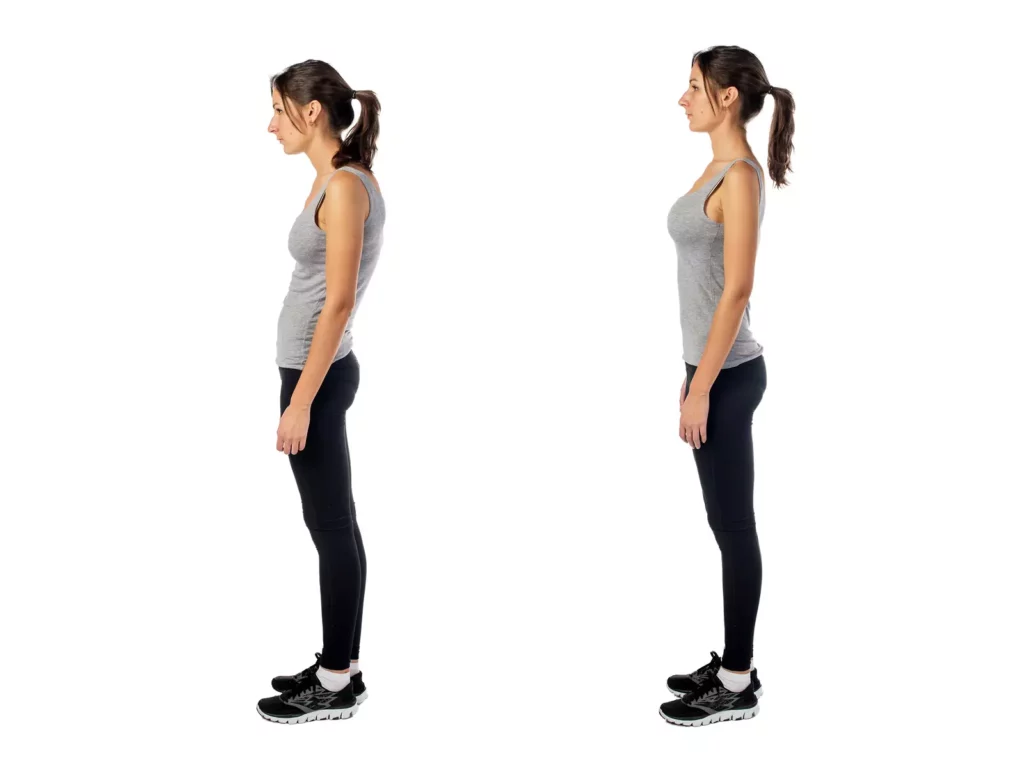
Make it a habit to sit with your spine elongated and shoulders relaxed. Try posture-friendly seating or use a lumbar pillow for support. Throughout the day, do gentle stretches to open your chest and extend your spine—simple moves that help your body breathe and drain more effectively. Good posture doesn’t just make you look more confident—it supports the invisible systems keeping you energized and toxin-free.
Why Lymph Hates Processed Foods
Processed foods may be quick and convenient, but they’re packed with preservatives, artificial colors, hydrogenated oils, and refined sugars—all of which increase inflammation and slow your lymphatic system. These substances are foreign to your body and take a toll on your liver, gut, and lymph nodes as they try to filter out the overload. Over time, this can lead to puffiness, chronic fatigue, and a weaker immune system.

Swap out processed snacks with whole, nutrient-dense alternatives like fruits, nuts, seeds, and fresh veggies. Read labels and avoid ingredients you can’t pronounce. Making small upgrades—like choosing brown rice over instant packets, or homemade trail mix instead of candy bars—can reduce the toxic burden on your system. The fewer fake ingredients your body has to deal with, the more energy it can put toward healing, immunity, and detox.
This Cleaning Product’s a Lymph Wrecker
Many household cleaners contain harsh chemicals like ammonia, chlorine, and synthetic fragrances that release toxic fumes into your environment. These chemicals are easily inhaled or absorbed through your skin and must be processed by your lymphatic system. Frequent exposure can overwork your detox pathways and leave you feeling foggy, fatigued, or sensitive to smells.
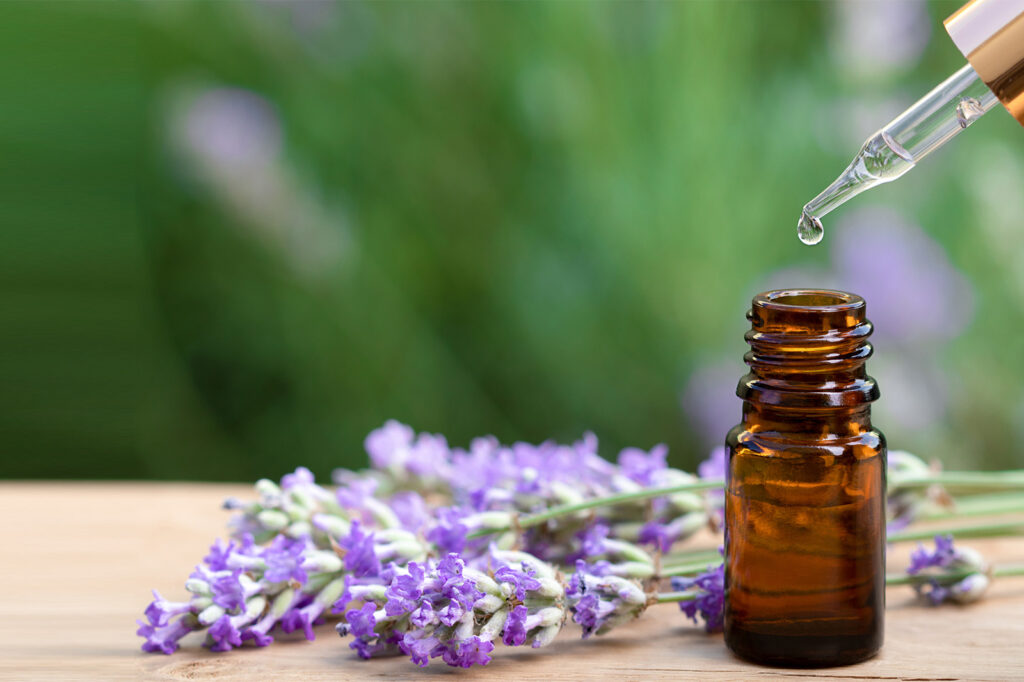
Try switching to natural cleaning alternatives with plant-based ingredients, vinegar, or baking soda. Essential oils like lemon, eucalyptus, or tea tree add a fresh scent without the chemical load. If you do use conventional products, ventilate the area and wear gloves. Reducing toxic exposure in your home gives your lymphatic system space to breathe—and more capacity to handle what truly matters in your health.
The Forgotten Organ That Supports Flow
Your liver plays a huge role in lymphatic health—but it’s often overlooked. The liver filters toxins from the blood and creates lymph fluid. When it’s overloaded with alcohol, processed food, or environmental toxins, lymph production slows and waste begins to accumulate. A sluggish liver equals a sluggish lymph system, and that’s when fatigue, bloating, and brain fog creep in.

Support your liver by eating bitter greens like arugula, dandelion, and kale. Drink warm lemon water in the morning, and avoid heavy meals late at night. Herbs like milk thistle and turmeric can also gently support liver function. Keeping your liver happy makes it easier for your lymph system to stay light, fluid, and efficient. It’s all connected—and your body feels the difference when your internal filters are working well.
You’re Probably Breathing All Wrong
Breathing from your chest instead of your belly is a common habit, especially during stress. But shallow breathing limits the movement of your diaphragm—a major pump for your lymphatic system. This means less lymph flow, less oxygenation, and more sluggishness. Over time, poor breathing habits can lead to lymph stagnation, poor posture, and even increased anxiety.

Train yourself to belly breathe by placing one hand on your stomach and one on your chest. Inhale deeply so your belly rises, and exhale slowly through your mouth. Practicing this a few minutes a day helps recondition your breath, calm your nervous system, and stimulate lymph flow. Better breathing is one of the simplest ways to clear your head, reduce tension, and give your detox system a boost—no gym required.
Too Much Screen Time? Big Problem
Endless hours of screen time can leave you stiff, hunched, and motionless—conditions that are kryptonite for your lymphatic system. When you’re locked into one position, especially with poor posture, lymph flow slows dramatically. Plus, blue light exposure from screens can mess with your sleep patterns, adding another layer of stress that further impairs detox.

To counter the effects, take short movement breaks every 30-60 minutes. Stretch your arms, roll your shoulders, or take a walk around the room. Use blue light filters on your devices, especially at night, and power down at least an hour before bed to support deeper rest. Your lymph system works hard while you sleep, so give it the support it needs by breaking up screen time and prioritizing real-world movement.
How Cold Feet Hurt Circulation
Cold feet aren’t just uncomfortable—they can be a sign of poor circulation and stagnant lymph flow in the lower body. When your extremities stay chilly, it often means blood and lymph aren’t moving efficiently. This can lead to swelling, numbness, or that “heavy leg” feeling that makes you want to sit instead of move—which just worsens the problem.
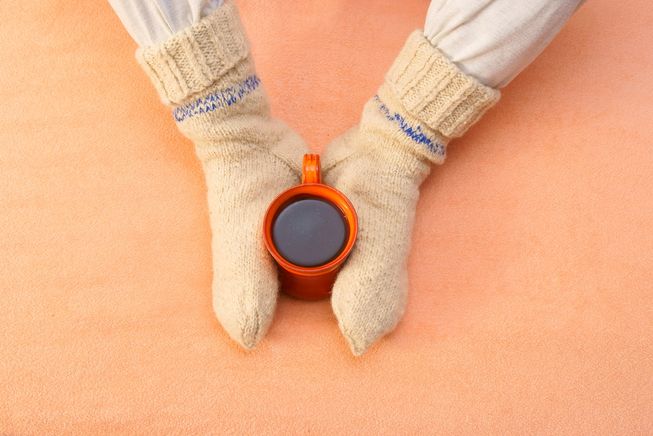
Keep your feet warm with cozy socks, foot soaks, or light movement throughout the day. A quick foot massage with a natural oil like castor or coconut can also stimulate lymphatic flow. If you’re standing for long periods, take breaks to elevate your legs and wiggle your toes. Warming up your feet is more than just comfort—it’s about encouraging vital flow to keep your whole body feeling balanced and energized.
This Lazy Habit Slows Lymph
We all have those days when lounging around feels good, but prolonged inactivity—even on weekends—can lead to serious lymphatic stagnation. The lymphatic system is designed to be in motion. When you’re inactive for too long, especially lying down or sitting still, waste can build up and circulation slows to a crawl. You might feel more bloated, sluggish, or even emotionally low as a result.

The fix isn’t complicated—just sprinkle in small, intentional movements throughout your day. Do some light stretching while watching TV, take walks between tasks, or bounce in place while listening to music. Even five-minute movement bursts can reawaken your lymph flow. Rest is important, but staying sedentary for hours on end can leave your system sluggish. Your body—and your mood—will thank you for keeping things moving.
Why Sugar Sludges Your System
Refined sugar isn’t just tough on your waistline—it’s also a major lymphatic disruptor. When you consume too much sugar, it spikes inflammation, suppresses immune function, and feeds harmful gut bacteria. All of this puts extra pressure on your lymph system, which has to work harder to clean up the mess. Over time, lymph fluid can become thicker and slower, making detox more difficult.
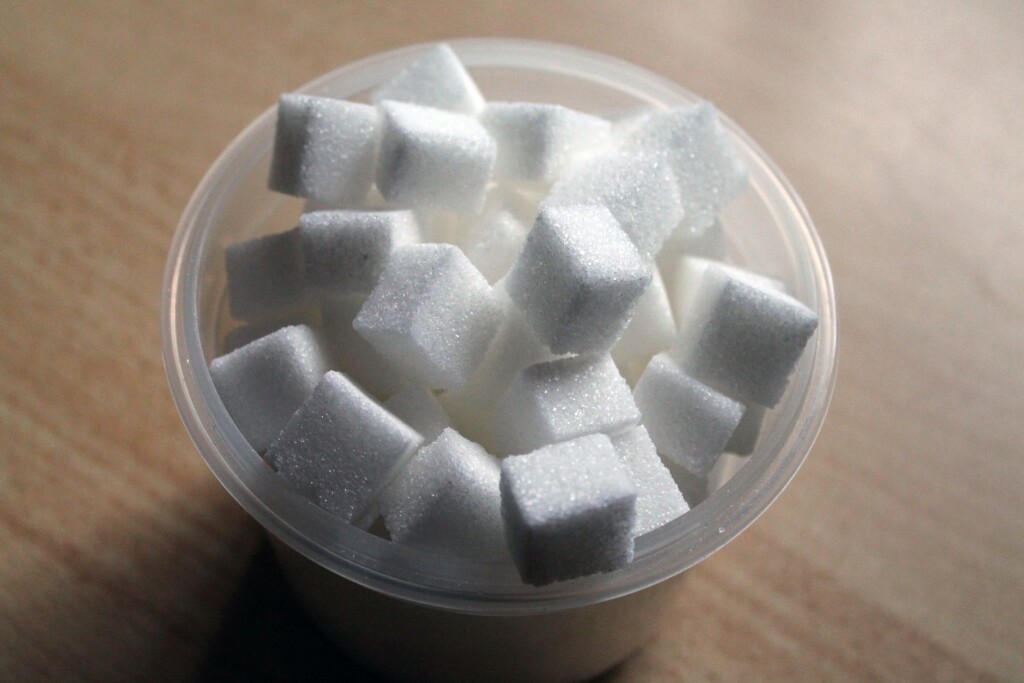
Cutting back on sugar doesn’t have to be extreme. Start by replacing sweetened drinks with herbal teas or infused water. Swap sugary snacks for fresh fruit, and read food labels to spot hidden sugars like high-fructose corn syrup and “evaporated cane juice.” A diet lower in sugar keeps inflammation in check and supports smoother, more efficient lymphatic flow. Less sugar, more glow—it’s a win for your whole body.
The Lymph Price of Poor Sleep
Sleep is prime time for your body to repair, regenerate, and detox. If you’re skimping on rest or dealing with poor-quality sleep, your lymphatic system doesn’t get the downtime it needs to process and flush out waste. This can leave you feeling puffy, foggy, and more prone to illness. Your glymphatic system (the brain’s version of lymphatics) is especially active during deep sleep, clearing out toxins that build up during the day.

To support better sleep and better drainage, create a calming nighttime routine. Dim the lights an hour before bed, unplug from screens, and consider gentle stretches or meditation. Avoid eating too late, as digestion can interfere with rest. Prioritizing high-quality sleep gives your lymphatic system the nightly reset it needs to keep your body energized, clear-headed, and resilient.
Your Beauty Products Could Be Poison
What you put on your skin goes straight into your bloodstream—and your lymphatic system. Many mainstream beauty products are packed with parabens, phthalates, synthetic dyes, and other toxic ingredients. These chemicals may smell nice or feel luxurious, but they can overload your body’s detox systems and disrupt your hormones.
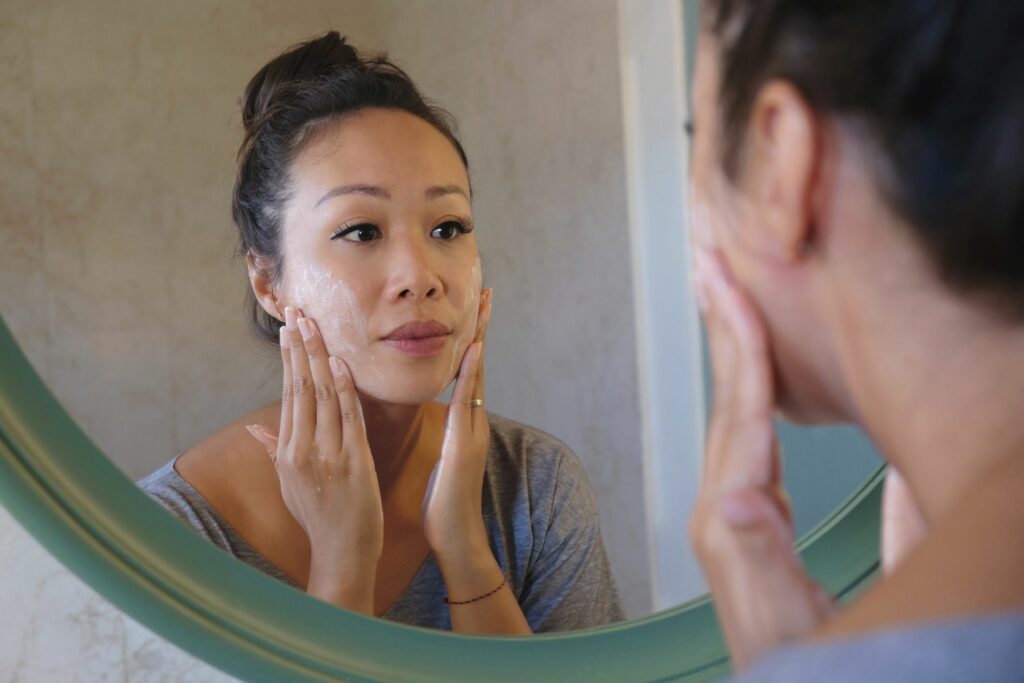
Look for clean beauty alternatives with short ingredient lists and no synthetic fragrances. Brands that use essential oils, cold-pressed oils, and botanical extracts are gentler on your lymphatic system. You can even DIY your own skincare using coconut oil, aloe, or raw honey. Clean beauty isn’t just a trend—it’s a way to lighten your toxic load and support your body’s natural flow from the outside in.
This Snack Causes Lymph Traffic Jams
Cheese, deli meats, and other high-fat animal products can thicken lymph fluid and contribute to sluggish circulation. These foods are often high in saturated fats, sodium, and preservatives, all of which can lead to fluid retention and inflammation. While small amounts may be fine, eating them frequently can jam up your lymphatic highways and leave you feeling heavy and tired.

Balance it out by eating more plant-based fats like avocado, chia seeds, flaxseeds, and nuts, which support healthy fluidity. If you love your cheese or charcuterie, consider enjoying them in moderation and pairing them with fiber-rich veggies to support digestion and detox. Making smarter snack choices helps keep your lymphatic system moving—and your energy levels steady.
Dehydration: The Detox Disaster
When you don’t drink enough water, your lymph fluid becomes thick and slow-moving, like syrup instead of a stream. Since lymph is mostly water, dehydration makes it harder for your body to carry away toxins, fight infections, and reduce inflammation. You might feel groggy, swollen, or achy—and not realize water is the missing link.

Aim to drink water consistently throughout the day rather than gulping it all at once. A good rule of thumb is to drink half your body weight in ounces. Add a pinch of sea salt or lemon juice to improve absorption, especially first thing in the morning. Proper hydration is one of the easiest and most powerful ways to support your lymphatic system—without fancy detox products or supplements.
Why You Should Bounce More
Gentle bouncing motions—like those you’d get on a mini trampoline—are one of the best ways to activate your lymphatic system. Rebounding creates rhythmic pressure changes that encourage lymph fluid to move upward and out of the tissues. It’s low-impact, easy on the joints, and surprisingly energizing—even just five to ten minutes a day can make a difference.

If you don’t have a rebounder, you can still mimic the effect by doing light jumping jacks, dancing, or even bouncing on your toes in place. The key is light, rhythmic movement that gets your muscles working and fluids flowing. Bouncing isn’t just for kids—it’s a fun, effective tool for detoxing and boosting your vitality from the inside out.
This Common Vitamin May Help
Vitamin C isn’t just for colds—it’s a key nutrient for supporting a strong, active lymphatic system. It helps produce collagen (important for healthy vessels), reduces inflammation, and supports your immune function—all vital components of lymph health. When you’re low on vitamin C, your body may struggle to circulate lymph effectively and respond to infections or toxins.

Incorporate more vitamin C-rich foods like oranges, kiwi, strawberries, bell peppers, and leafy greens into your meals. You can also take a supplement if needed, especially during high-stress periods or cold season. A daily boost of vitamin C helps keep your tissues resilient, your immune system sharp, and your lymphatic flow smooth and efficient.
Lymph Flow Loves This Ritual
Dry brushing is one of the simplest, most effective rituals to support your lymphatic system. Using a firm, natural-bristle brush on dry skin stimulates circulation, exfoliates dead skin cells, and—most importantly—encourages lymphatic drainage. Since lymph vessels lie close to the skin’s surface, this light brushing motion helps move stagnant fluid and supports your body’s detox pathways.
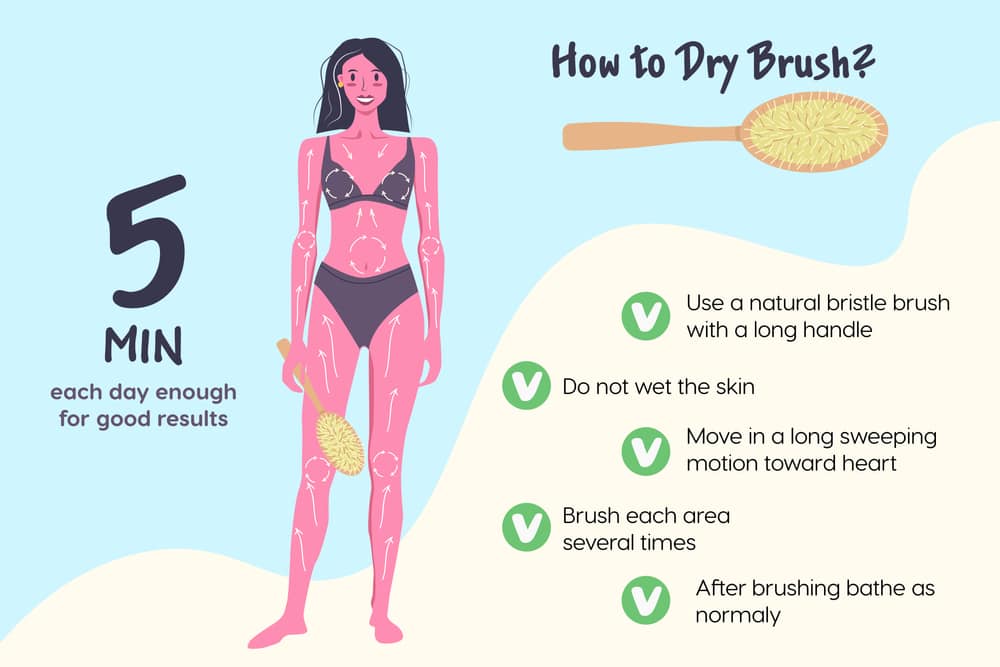
Before showering, use upward strokes toward your heart, starting at your feet and working your way up. Be gentle—there’s no need to scrub hard. It only takes a few minutes but can lead to noticeably smoother skin, reduced puffiness, and a boost in energy. Incorporating this habit a few times a week can help “wake up” your lymph flow and give your entire system a refreshing nudge in the right direction.
Too Many Toxins, Not Enough Drainage
Our bodies are constantly bombarded by toxins—through food, air, water, and products. While your lymphatic system is designed to handle waste, it can become overwhelmed when your exposure outweighs your body’s ability to drain. When that happens, toxins build up in tissues, slowing your metabolism, fogging your brain, and stressing your immune system.

Reduce your toxic load by choosing organic produce when possible, filtering your water, and minimizing plastic use. Even small changes, like switching from plastic containers to glass or avoiding microwaving in plastic, make a difference over time. When you lower the number of incoming toxins, your lymph system can catch up—and you’ll likely feel clearer, lighter, and more balanced from the inside out.
The Danger of Shallow Breathing
Shallow breathing isn’t just a stress response—it’s a lymphatic slowdown. When you breathe only into your chest, you miss out on the deep diaphragm movement that helps push lymph fluid through the thoracic duct. This area is a major drainage center for the body, and it depends on full, belly-based breathing to function at its best.

Train your breath by setting aside a few minutes each day for diaphragmatic breathing. Sit or lie comfortably, place a hand on your stomach, and focus on expanding your belly as you inhale. Slowly exhale and feel the release. Not only will you feel more calm and centered, but you’ll also be giving your lymph system a free, natural pump. It’s one of the easiest tools for better health—no equipment, no cost, just your breath.
Your Lymph Needs Movement Daily
Even if you exercise a few times a week, going long stretches without daily movement can stall your lymph system. It’s a flow-based system that doesn’t pump itself—so the more consistently you move, the better it works. Sedentary days can lead to fatigue, puffiness, and poor circulation, even if you had a great workout the day before.

Make movement part of your daily rhythm. Walk after meals, stretch when you wake up, or take five-minute dance breaks between tasks. You don’t need intense cardio—just consistent muscle engagement. The key is frequency, not intensity. By keeping your body gently active, you keep your lymph moving, your energy flowing, and your detox pathways wide open.
How Constipation Blocks the System
Your digestive system and lymphatic system are deeply connected. When you’re constipated, waste backs up—not just in your gut but throughout your entire body. This slows down lymphatic drainage, increases inflammation, and overburdens your detox pathways. The longer waste stays in your system, the more likely toxins are reabsorbed into the bloodstream.

Support regular elimination by eating fiber-rich foods, staying hydrated, and moving daily. Magnesium supplements or herbal teas like senna or ginger can also help gently get things going. Don’t ignore the signals—your lymph system relies on a smoothly running digestive tract to stay efficient. When digestion is regular, detox is faster, easier, and far more effective.
The Best Way to Unclog Fast
Lymphatic self-massage is one of the most underrated tools for quick relief from sluggish lymph flow. By using light, rhythmic strokes along key areas—like your collarbones, neck, underarms, and jaw—you can manually encourage drainage and reduce swelling or puffiness. Unlike deep tissue massage, lymph massage is incredibly gentle and targets the surface-level vessels just under the skin.
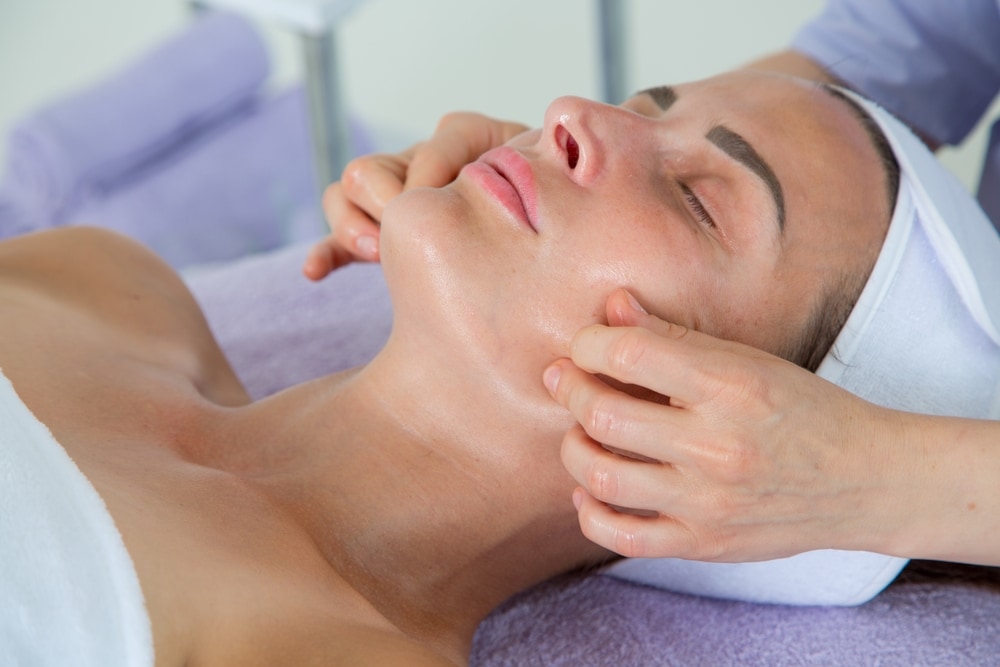
Start with clean hands and a light touch. Use your fingertips to make small circular motions near the collarbone and jawline, always moving in the direction of the heart. Just five to ten minutes a few times a week can make a noticeable difference in how you feel. It’s a simple, relaxing ritual that can leave you lighter, clearer, and less bloated in minutes.
Fix These Habits, Feel Amazing
When you understand how the lymphatic system works, everything starts to click. It doesn’t need extreme detoxes or miracle supplements—it thrives on movement, hydration, clean food, and smart lifestyle choices. Small, consistent changes in your daily routine can have a huge impact on how light, energized, and resilient you feel.
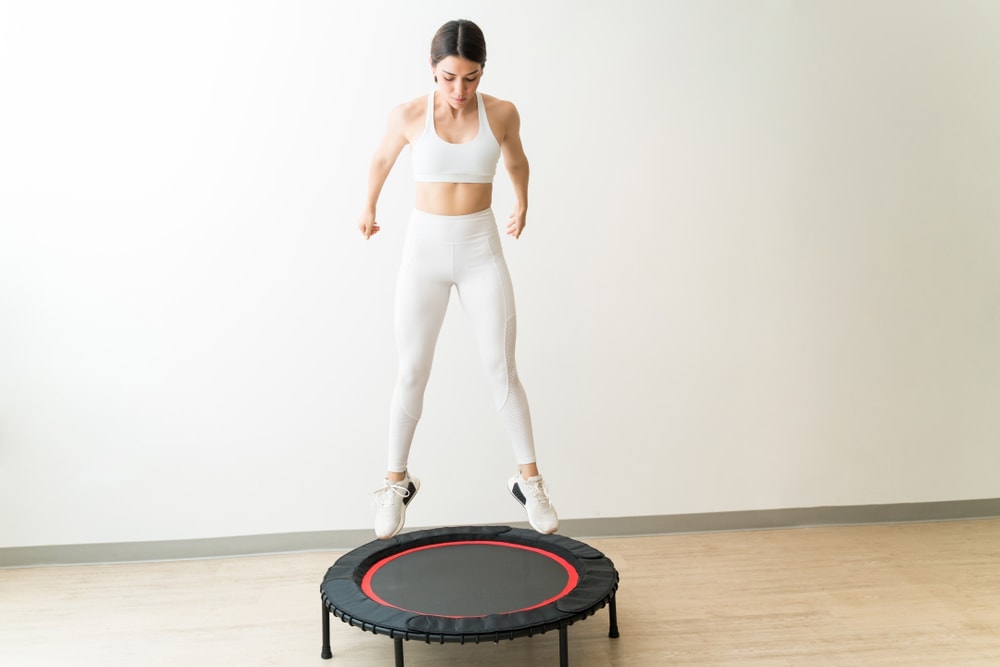
So if you’ve been struggling with brain fog, puffiness, or chronic fatigue, look at the habits in this list. Adjust a few at a time, and give your lymph the support it deserves. It’s your body’s unsung hero, working behind the scenes every day. When it flows freely, you’ll feel the shift—not just in your health, but in your entire quality of life.





